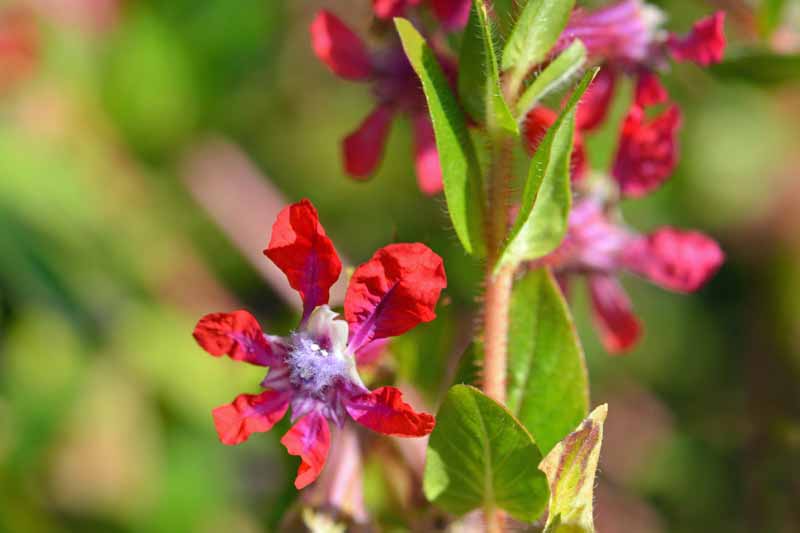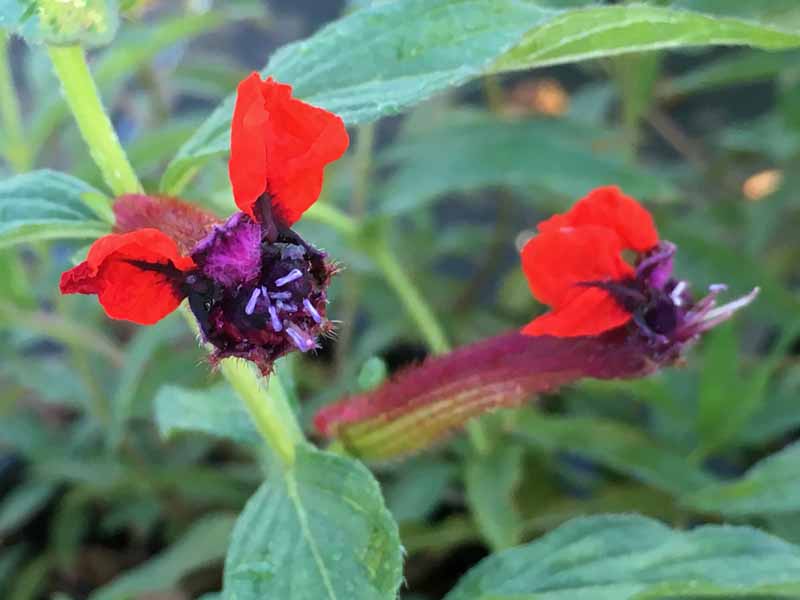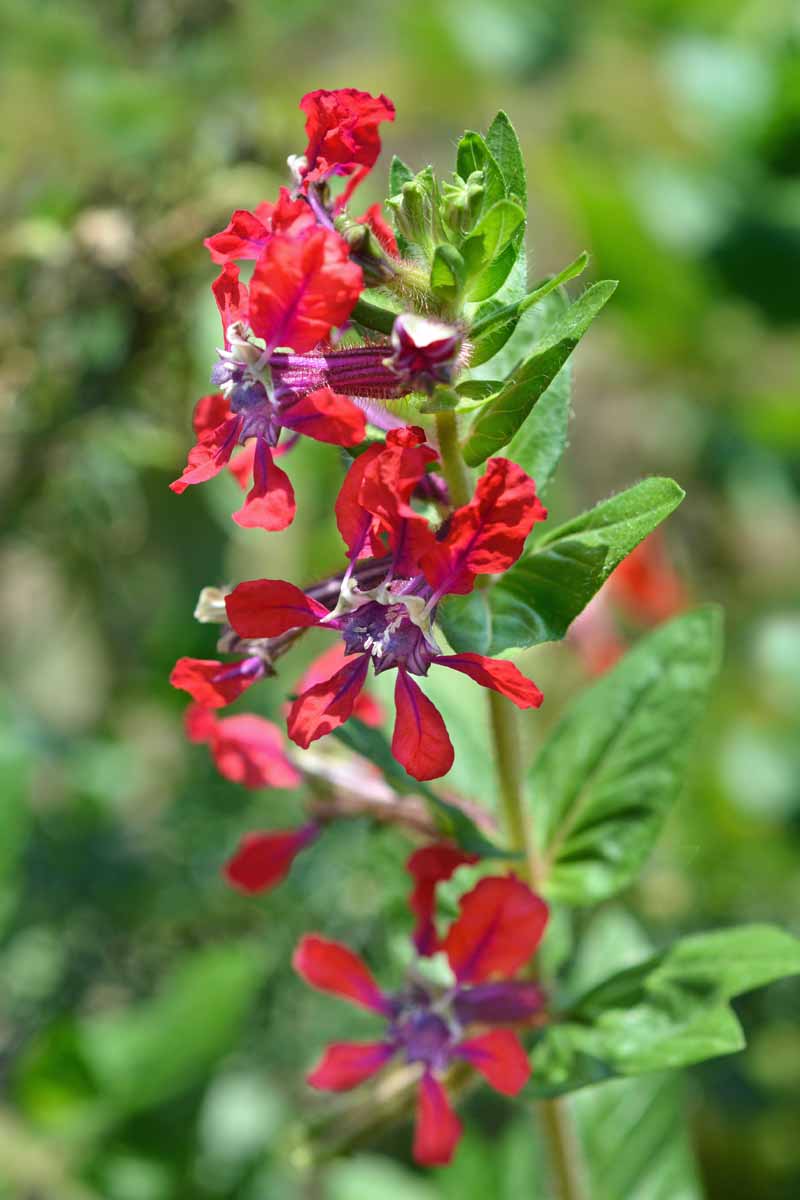Here’s another good one for you: bat-faced cuphea. As you might guess, this plant’s sweet little flowers resemble bat faces, with two perfectly colored upper petals that pop up like a bat’s ears, and other little petals that are arranged just so and look like a little bat face. We link to vendors to help you find relevant products. If you buy from one of our links, we may earn a commission. This loose shrub is part of a family of about 115 species, some of which have equally interesting names, such as cigar plant. The open-pollinated form of the plant displays flowers that are deep purple, white, and red, but newer cultivars are available in a variety of colors. More on those shortly. While bees, butterflies, and birds may not be fans of the flying mammals, they do indeed favor the nectar of the eponymous plant. This subshrub begins producing clusters of numerous flowers in late spring, and continues to bloom until frost. It’s native to Mexico and Central America.
Propagation
Bat-faced cuphea can be propagated from seed or via stem cuttings, or you can transplant nursery starts into the garden.
From Seed
You can sow cuphea seeds directly in the garden when all danger of frost has passed, or you can start seeds indoors 10 to 12 weeks before the last spring frost date. Scatter seeds on top of soil and sprinkle a light coating of milled peat over them. Don’t completely bury the seeds, as they need light to germinate.
From Cuttings
You can propagate cuphea from softwood cuttings. Softwood is a plant stem that is well-developed but not old and woody. With clean and sharp shears, cut four- to six-inch stems from a healthy plant. Fill small pots with an all-purpose soil mix and insert and remove a pencil to create a hole for the cutting. Remove the lower leaves from your cutting, dip the cut end into rooting hormone, and place in the hole. Place a plastic dome or clear plastic bag over the pot or pots to create a little terrarium. Put it in bright, indirect light.
From Transplants
If you can find live plants, simply place the root ball into a hole about the same size as the container from which you are transplanting
How to Grow
Bat-faced cuphea prefers rich organic soil that drains well. In many parts of the country, this plant is grown in full sun. In hot zones such as Central Texas and the Arizona desert, however, it needs a little – or even more than a little – shade. This plant is quite heat- and drought-tolerant, though it might be a bit happier and grow a bit larger with regular watering. It is prone to root rot, so don’t overwater it, especially in heavy clay soils. Feed in springtime with a slow-release fertilizer, or monthly throughout the growing season with an all-purpose fertilizer.
Growing Tips
For best results, provide plants with:
Organic soil.Full sun or part shade, depending on where you live.Regular water.All-purpose fertilizer.
Pruning and Maintenance
Bat-faced cuphea is fairly low maintenance. You can perform some light tip pruning or pinching if plants become too leggy. Additionally, you might want to do a late-winter shape-up, trimming the plant into a nice form. There’s no need to deadhead the flowers of this plant.
Managing Pests and Diseases
This plant has no serious insect or disease problems. It is deer-resistant. As we mentioned above, there are several colorful cultivars available commercially. Be aware, however, that with some of these newer varieties, the bat’s face is less obvious in the flower’s form. ‘Sriracha Rose’ You can find packets of 15 seeds of ‘Sriracha Rose’ bat-faced cuphea, which features a rosy-red bloom available via Burpee. This compact plant has large petals with a papery consistency. Other cultivars include ‘Tiny Mice,’ a small plant that produces flowers with two small red-orange petals. ‘Totally Templed’ has large, showy red flowers, and ‘Vienco” produces lavender flowers.
Best Uses
Bat-faced cuphea makes a nice container plant, particularly if you need to overwinter it indoors. Many gardeners enjoy this plant in hanging baskets, and some use it as a houseplant year ‘round. Don’t let your container dry out, and make sure the plant gets four hours of bright sunlight each day! They’re suitable for borders, beds or path edging. They are particularly pretty in masses. Those in the southern reaches of the country can count on this beauty to provide bright color year after year. Others might be happy with its use in the garden as an annual, or as a container plant. Do you have any plants named for animals in your garden? Tempted to add bat-faced cuphea? Tell us about your experiences with this plant in the comments section below. And for more information about growing flowers in your garden, check out these guides next:
Grow Evening Primrose for Late-Day BeautyHow to Grow and Care for StrawflowersHow to Grow Chamomile




